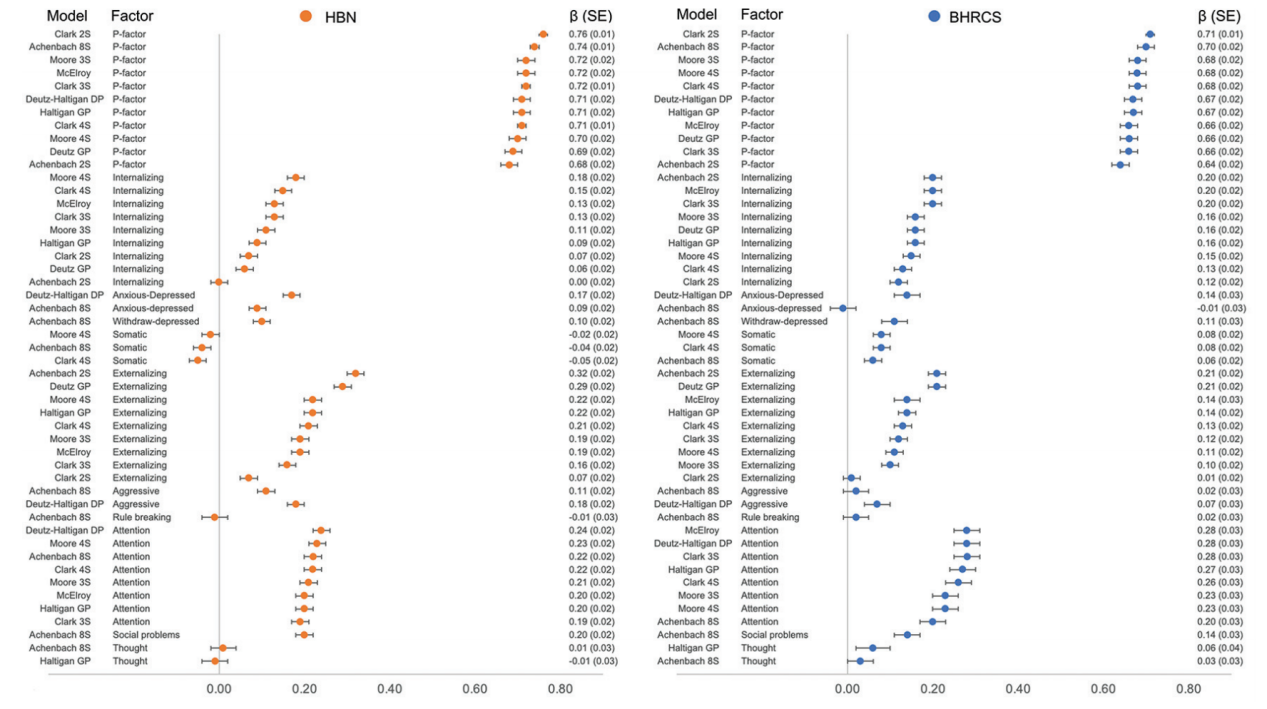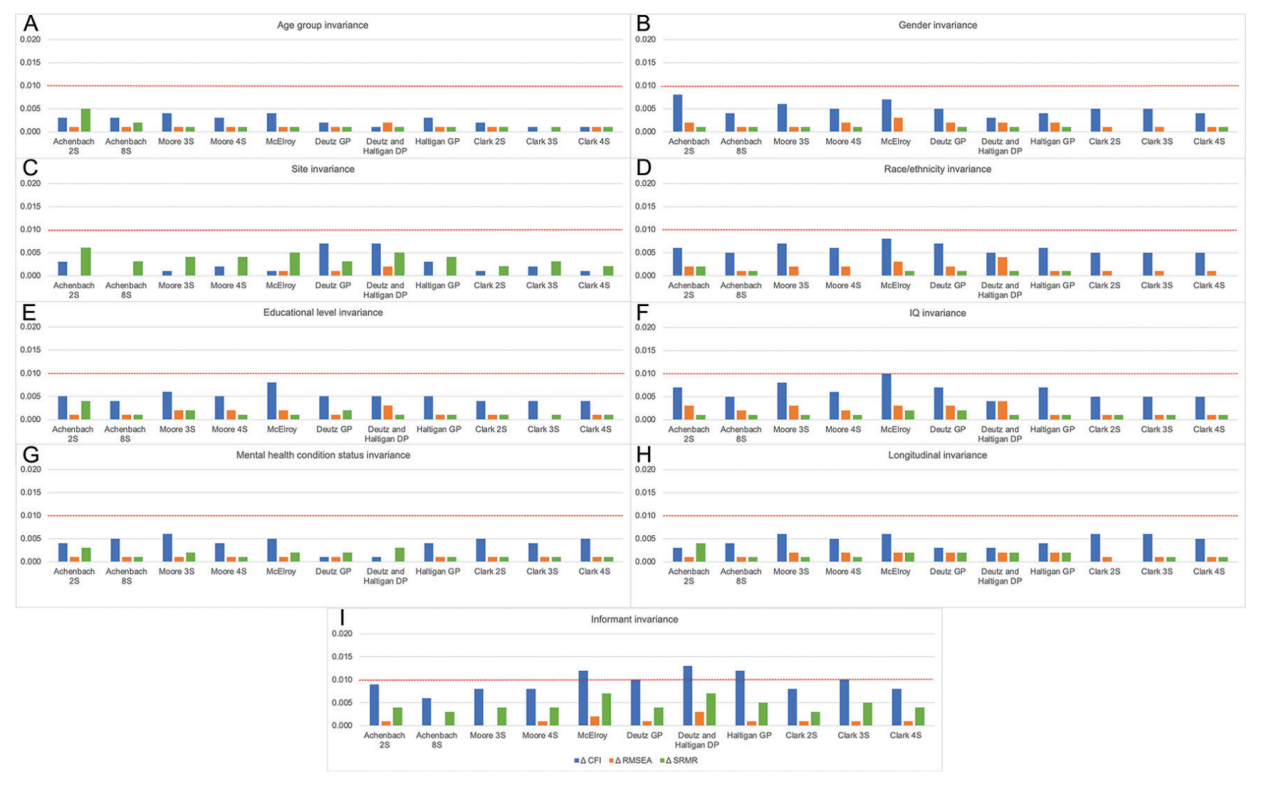Symptoms of mental health conditions in youth tend to co-occur; having one condition increases the chances of having another. This has led to the application of bifactor models, which separate the shared factor (i.e., P factor) and the specific factor of psychopathology. One of the most widely used and extensive psychopathology assessment tools in young people is the Child Behavior Checklist (CBCL), which has been modeled using the bifactor structure in many prior studies. However, the correspondence between dimensions of psychopathology derived from the CBCL bifactor models is uncertain and differences in modeling specifications (i.e., items and dimensions included in the model) may impact reproducibility. Thus, despite prior research that has demonstrated the value of these bifactor models, substantial issues in their implementation remain.
Researchers from Brazil, China, and the United States have teamed up to create the Reproducible Brain Charts (RBC) initiative in an effort to build highly reproducible growth charts of youth brain development. The RBC initiative contains neuroimaging data from six large-scale developmental imaging cohorts, including the developmental component of the Chinese Color Nest Project (devCCNP) [1,2]. Recently, the team conducted an international collaborative study to systematically test the reliability, validity, measurement invariance, and the correlation of different bifactor models of psychopathology using longitudinal CBCL data collected from 7005 children and adolescents aged 5 to 22 years[3].
The present study have estimated a total of 11 bifactor models, which were originated by different research groups and samples, and used different item selection approaches, ranging from 39 to 116 items. The global model fit was broadly similar. P-factors from all models, and internalizing, externalizing and somatic specific factors in most models presented high reliability. Symptom impact was measured using the Strengths and Difficulties Questionnaire (SDQ) impact questions and then used to test criterion validity (see Figure 1). Impact was predicted by the P-factors and attention specific factors in all models.

Figure 1. Latent Regression Models of Symptom Impact (SDQ) Predicted by Factors From Each CBCL Model
Measurement invariance results are presented in Figure 2. The models were broadly invariant across age groups (5 to 10 years old compared with 11 years old or older), gender, study site, race/ethnicity (White and non-White), educational level (primary and at least on the secondary school), IQ (below average, average, and above average), psychiatric condition status, informant (parent-, self- and teacher-report) and time points (three time points). P-factors were highly correlated across models (r = .88 to .99) and homotypic specific factors were highly correlated.

Figure 2. Measurement invariance results
Present findings demonstrated that CBCL bifactor models generally present acceptable fit, are broadly invariant and the p-factor and homotypic specific factors are highly correlated between models, regardless of the included items/dimensions. This finding strengthens the reproducibility and comparability among studies using CBCL while applying the bifactor structure.
References
[1] Yang N, He Y, Zhang Z et al. Chinese Color Nest Project (CCNP): growing up in China. Chin Sci Bull. 2017;62:3008–3022. In Chinese.
[2] Liu S, Wang YS, Zhang Q, et al. Chinese Color Nest Project : An accelerated longitudinal brain-mind cohort. Dev Cogn Neurosci. 2021;52:101020. doi:10.1016/j.dcn.2021.101020
[3] Scopel Hoffmann M, Moore TM, Kvitko Axelrud L, et al. Reliability and validity of bifactor models of dimensional psychopathology in youth. J Psychopathol Clin Sci. 2022;131(4):407-421. doi:10.1037/abn0000749